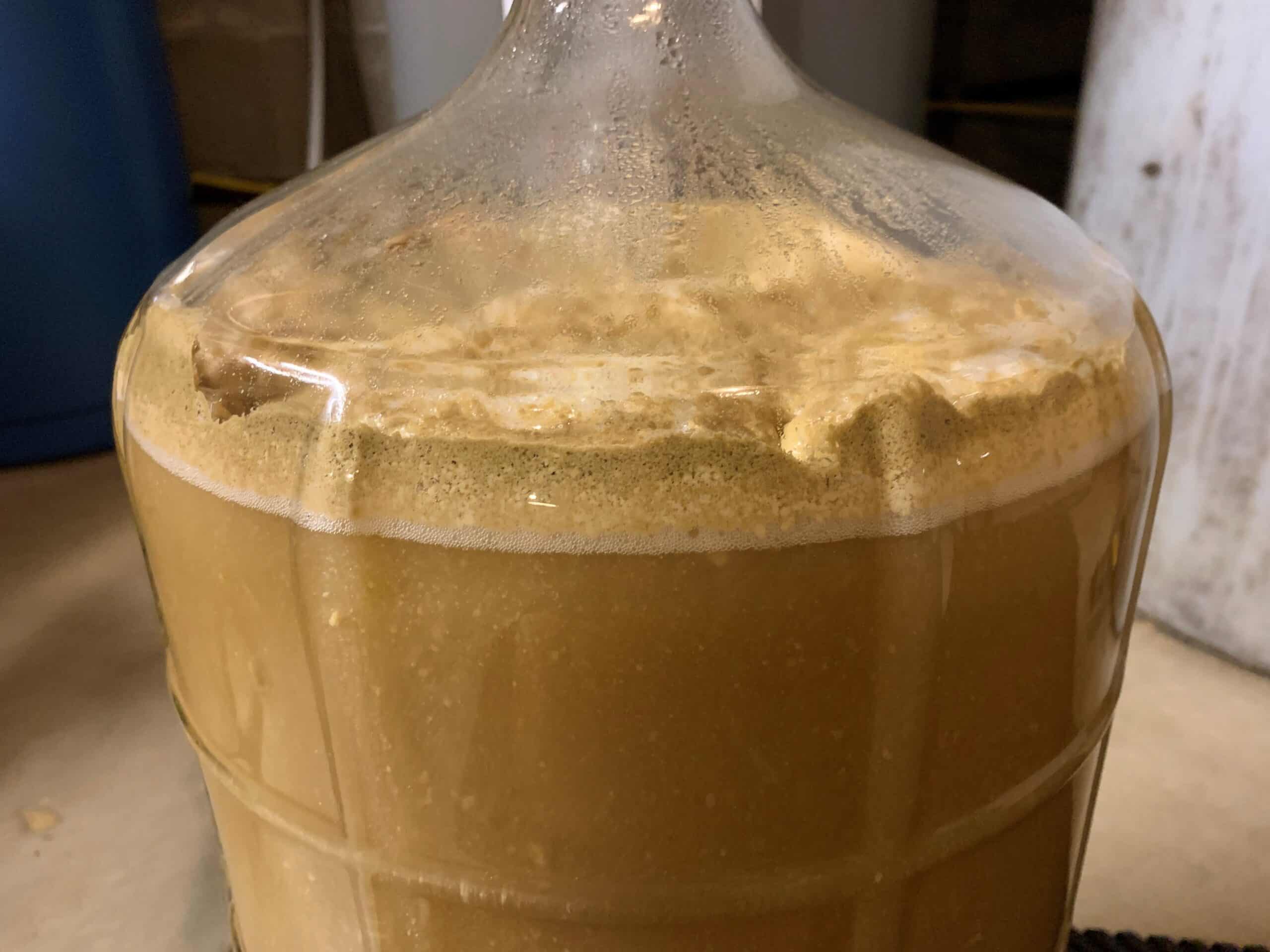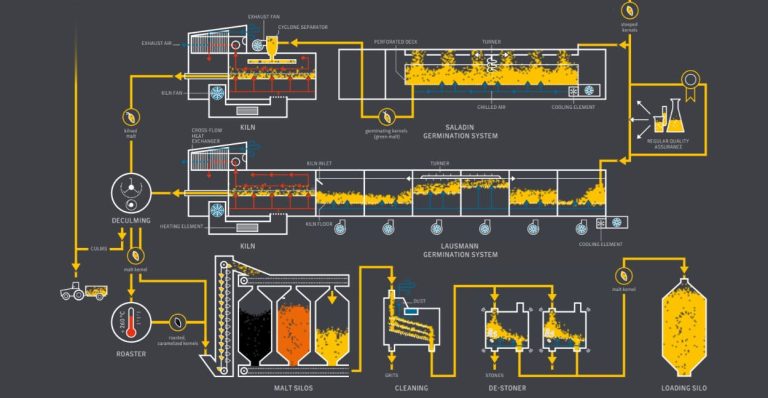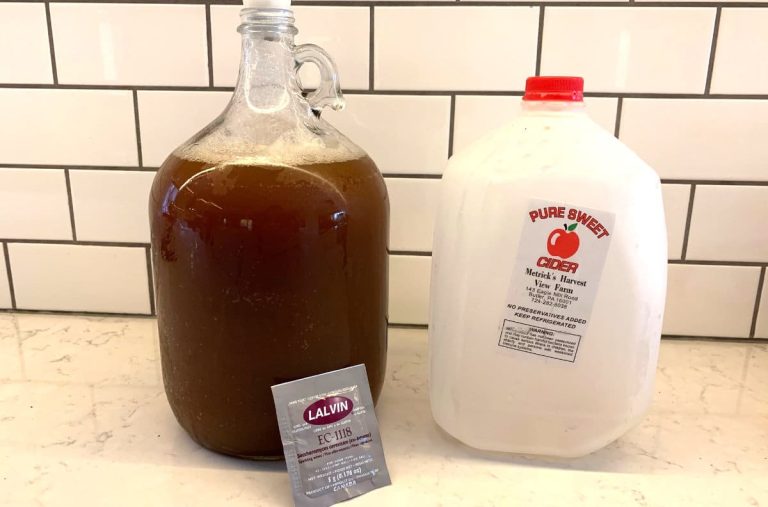Anti-Foaming Agents: FermCap, 5-Star Defoamer & Others
Anti-foaming agents are used to control wort boil overs or krausen blowouts during fermentation. There are a couple different brands that make beer specific anti-foaming agents and a few over-the-counter ones that work as well.
What are Anti-Foaming Agents?
There are two types of foam controlling products: Silicone and Vegetable oil-based.
The video above is great at showing the different ways an anti-foaming product works. While the graphics talk about the benefits of using the FermCap product specifically, the video also holds true for all brands.
Silicone anti-foamers are the most widely used of the two versions, but both work in identical ways. Anti-foaming products reduce the surface tension of the wort, thus not allowing the bubbles to combine easily. If the bubbles cannot combine and build upon themselves, then the foam stays down to a manageable level.
During the brewing process, foam occurs in two places:
- During the beginning stages of boiling wort, foam is caused by grain proteins that coagulate with the boil’s rolling action. The wort will continue to foam until the protein clumps get heavy enough to sink back into the pot. This foaming usually occurs right before the boil and lasts approximately 2-3 minutes. If left alone, the wort foam will continue to rise and eventually cause a boil over, which is when the hot wort spills over the side of your kettle.
- During fermentation CO2 is produced causing the wort to create a foam on top your beer, called a krausen. Krausen foam consists of wort protein, hop resins, and yeast that collect and tend to adhere to the sides of the fermentor. Some krausens get to be so large that they overflow the fermenter’s available headspace.
Reducing foam in the beginning stages of brewing beer helps protect your final product in multiple ways.
First, boil overs have the ability to lose a couple pints of beer on the home brewing scale. While this may be a huge deal for some, the worst part for me is having to then deal with the sticky wort that ends up all over the kettle and propane burner.
Later, during fermentation, krausen blowouts occur when the yeast are in overdrive propogating and eating sugar. Blow outs are extremely messy to clean up as well, but they also result in the loss of some valuable assets for your beer’s health. Top fermenting yeast live inside that krausen, and if it overflows you are losing millions of your little workers.
With the proper use of anti-foam products, you should be able to add much more wort to the fermenter by reducing the headspace needed. In some cases, this can be as much as 20-30% more beer.
Anti-Foaming Product Concerns
In my opinion, there aren’t many reasons to not use an anti-foaming agent, but there are a few common concerns that everyone that is new to the product initially have.
Is it Healthy?
The FDA warns that when using silicone anti-foamers, no more than 10 ppm of active silicone can remain in the final beer and that the antifoam must be filtered out of the final product before serving. This may be problematic for breweries that sell their beer commercially, but what about the home brewer that doesn’t do filtration?
Luckily, the active ingredient in the silicone-based products is not absorbed into the body during ingestion. In fact, the active ingredient is exactly the same as what’s in the Gas-X brand of gas relief products.
In addition, these products should settle out of your beer before packaging anyway. It attaches onto the surface of the yeast’s cell walls, which then drop into the trub after completing their job.
Vegetable-oil based antifoamers are also a yeast nutrient. This is their largest benefit when compared to their silicone-based counterparts.
Does it Reduce Head Retention?
A beautiful beer just looks sad without a nice fluffy head on top. It stands to reason that if an anti-foaming agent is used during brewing, it would also kill your beer’s head retention properties. However, the opposite is true when anti-foaming products are applied correctly. The reduction of foaming during fermentation actually prevents the release of foam-positive wort components, enhancing and stabilizing the head formation in your finished beer.
Increased Bitterness
When using an anti-foaming product, brewers have surprisingly reported increased bitterness. This apparently stems from the compound binding to the yeast cells before the dissolved bittering compounds do, thereby leaving more bitterness in the beer.
Midwest Supplies says that when an anti-foaming product is used during fermentation, it increases the beer’s bitterness by approximately 10%, measured by retained IBUs.
This means that you can lower the amount of hops used to bitter to achieve the same bitterness level in your finished beer.
Anti-Foaming Products
FermCap-S
FermCap-S is dimethylpolysiloxane, a silicone based antifoaming agent. It can be added to the kettle or fermenter, and the suggested dosing rate on the bottle is 1 drop per 5 gallons. However, we have found this is amount does nothing. We add 5 drops to our kettle to prevent boil overs, and 15-20 drops to our fermentation vessel, which is a corny keg with limited head room.
Five Star Defoamer
Five Star Defoamer 105 is a 10% silicone food-grade emulsion, and is the same as FermCap-S, just from a different manufacturer. The dosing rates of 5-Star Defoamer are exactly the same as with FermCap-S.
FermCap AT
Fermcap AT has the same active ingredient as FermCap-S – dimethylpolysiloxane – but is classified as a “Process Aid” because of its ability to remove itself from the beer under normal processing conditions. This removes the need to perform a filtration or centrifugal process to remove it if you are a commercial brewery. For homebrewer, there is no difference in the two.
Generic Vegetable oil-based Defoamer
Adventures in Homebrewing has the vegetable oil based product, called Foam Control. Vegetable oil is also a yeast nutrient, so it ends up being consumed during fermentation. The suggested dosing rate for this product is 1 drop for every 1 gallon, but as with the other products, we feel this is not adequate. We suggest using at least double or triple the amounts for sufficient foam control.
Alternative Methods
Liquid Gas-X and baby gas drops are identical products, but are marketed to the public for different use cases. Baby gas drops such as Mylicon, Little Tummys and Phazyme all contain the compound simethicone, which is activated dimethicone, a mixture of polydimethylsiloxanes and silicon dioxide. While that is all a lot of scientific words, the takeaway is that the beer and baby versions are basically the same thing and can work interchangably.
The addition of First Wort Hops (FWH) is also a way to help control kettle boil overs. When hops are added at first wort, the result is smaller and tighter bubbles that do not grow as easily. The assumption here is that first wort hopping adds hop oils early in the process, thus reducing foam.






